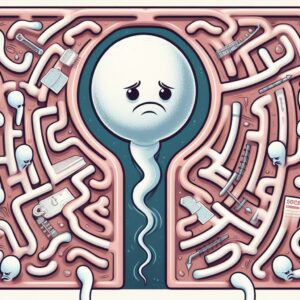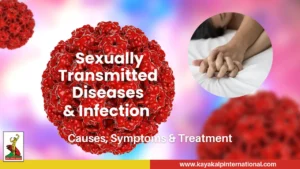Male hormone is usually referred as testosterone. It is the key male sex hormone that regulates fertility, muscle mass, fat distribution, and red blood cell production. Testosterone is a hormone found in humans, as well as in other animals. In men, the testicles primarily make testosterone. Women’s ovaries also make testosterone, though in much smaller amounts. Testosterone hormone levels are important to normal male sexual development and functions.
The production of testosterone starts to increase significantly during puberty and begins to dip after age 30 or so. During puberty (in the teen years), testosterone helps boys develop male features like body and facial hair, deeper voice, and muscle strength. Men need testosterone to make sperm. Testosterone levels generally decrease with age, so older men tend to have low blood testosterone levels.
Function of testosterone- Testosterone is the male hormone responsible for the development of male sexual characteristics. It is a type of androgen produced primarily by the testicles in cells called the Leydig cells.
Testosterone is thought to regulate the of functions
- Sperm production
- Sex drive
- Bone mass
- Fat distribution
- Muscle size and strength
- Red blood cell production
- Also affect his mood.
Low levels of testosterone- Testosterone levels naturally decrease as a man ages.
After the age of 40, the concentration of circulating testosterone falls by about 1.6 percent every year for most men. By the age of 60, the low levels of testosterone would lead to a diagnosis of hypogonadism in younger men. About 4 in 10 men have hypogonadism by the time they reach 45 years old. The number of cases in which older men have been diagnosed as having low testosterone increased 170 percent since 2012.
Tesosterone Defficency is more common in men who have diabetes or who are overweight. In one research study, 30% of overweight men had Low-T, compared to only 6.4% of those with normal weight. The same study found diabetes to be a risk factor for TD. In another study, 24.5% of men with diabetes had Low-T, compared to 12.6% of those without diabetes.
Symptoms of low testosterone-
Specific symptoms are those more likely or directly linked to TD such as:
- Reduced sex drive
- Reduced erectile function
- Loss of body hair
- Less beard growth
- Loss of lean muscle mass
- Feeling very tired all the time (fatigue)
- Obesity (being overweight)
- Symptoms of depression
Non-specific Signs/Symptoms of Testosterone Deficiency (TD): Non-specific symptoms are those that may or may not be linked to TD such as:
- Lower energy level, endurance and physical strength
- Poor memory
- Difficulty with finding words to say
- Poor focus
- Not doing well at work
Low sexual desire alone may not mean that you have TD. But if you have a combination of low sexual desire, reduced erectile function, and feelings of sadness and tiredness, you should talk to your doctor.
Causes
Some persons are born with conditions that cause Testosterone Deficiency (TD) such as:
- Klinefelter syndrome
- Noonan syndrome
- Ambiguous genitalia (when the sex organs develop in ways that are not typical looking)
Some men may develop Low-T because of conditions like these:
- Damage to testicles by accident
- Removal of testicles because of cancer
- Chemotherapy or radiation
- Pituitary gland disease leading to hormone deficiency
- Infection
- Autoimmune disease (when the body makes antibodies that attack its own cells)
Basically, if your testicles keep making less testosterone than normal, your blood levels of testosterone will fall. Many men who develop TD have Low-T levels linked to:
- Aging
- Obesity
- Metabolic syndrome (high blood pressure, high blood sugar, unhealthy cholesterol levels, and belly fat)
- Use of medications such as antidepressants and narcotic pain medications
Men with certain health problems also tend to have low testosterone. Some of these are:
- HIV (about 30 out of 100 also have low testosterone)
- AIDS (about 50 out of 100 also have low testosterone)
Diagnosis
A simple blood test can determine testosterone levels. There’s a wide range of normal or healthy levels of testosterone circulating in the bloodstream.
Total testosterone level. This test should be done at two different times on samples taken before noon. Testosterone levels are lower later in the day. If you are ill, the doctor will wait until you are not sick because your illness may cause a false result.
Luteinizing hormone (LH). This test is done to help find the cause of a Low-T level. This hormone controls how you make testosterone. Abnormal levels may mean a pituitary gland problem.
Blood prolactin level. If your prolactin level is high, your doctor may repeat the blood test to make sure there is no error. High prolactin levels also may be a sign of pituitary problems or tumors.
Blood hemoglobin or Hgb. Before doing this test, your doctor will look for other reasons for low Hgb such as climate level (like climate altitude), sleep apnea, or tobacco smoking.
Normal male testosterone levels range between 280 and 1,100 monograms per deciliter (mg/dl) for adult males. Low testosterone levels could be a sign of pituitary gland problems. The pituitary gland sends a signaling hormone to the testicles to produce more testosterone. A low T test result in an adult man could mean the pituitary gland isn’t working properly. But a young teen with low testosterone levels might be experiencing delayed puberty.
Treatment of low levels of testosterone- The treatment of low testosterone levels totally depends on causative factor, age and comorbidity of the person.
Testosterone supplements
One proposed treatment for low testosterone comes in the form of testosterone supplements.
One type of testosterone supplement, methyltestosterone, has received approval; However guidelines advise doctors not to prescribe this supplement due to the speed with which the liver metabolizes testosterone. This can lead to liver toxicity. While doctors can legally prescribe the supplement, they generally try to avoid this.
Testosterone replacement therapy
Testosterone replacement therapy (TRT) can help restore some affected functions of low testosterone. Studies have shown that TRT mainly impacts bone strength and hemoglobin levels in the blood, but not mental sharpness.
The treatment can be administered by:
- Skin gels and patches
- Injections
- Tablets that are absorbed through the gums
Deciding to pursue a course of TRT involves deciding between the perceived benefit of the therapy on the symptoms of a particular individual and the risks of the treatment. A recent study, for example, suggests that TRT provides extra benefit for overall mortality and stroke for men whose testosterone levels have normalized with TRT.
Transdermal (Topical)
There are topical gels, creams, liquids and patches. Topical medicines most often last for about four days. They absorb better if covered with an air- or water- tight dressing.
Apply liquids and gels, creams or patches to skin that is dry and without cuts or scratches. Do not wash the area until it is time for the next dose. Wash your hands after you apply liquids, gels or creams. Make sure that other people, especially women and children, do not touch the medicines.
A topical patch is like a band-aid with medicine on it. You put it on and leave it until the next dose is due. The medicine on the patch is less likely than liquids, gels and creams to transfer to others.
Intranasal
This form of testosterone comes in a gel. You pump the dose into each nostril, as directed. It is usually taken three times daily.
Pellets
Your doctor will place the testosterone pellets under the skin of your upper hip or buttocks. Your doctor will give a shot of local anesthesia to numb your skin, then make a small cut and place the pellets inside the fatty tissues underneath your skin. This medication dissolves slowly and is released over about 3-6 months, depending on the number of pellets.
Ayurvedic Treatment
According to Ayurveda, sperm and testosterone levels are considered as shukra dhatu. This shukra dhathu is the finest reproductive fluid that is formed by good parts of all the other dhatus like ras, rakta, mas, medha, asthi & majja dhatu. The quality of shukra dhatu helps to have good quality of sperm and testosterone levels.
I am suggesting u some ayurvedic medicines.
Take dhatu paushtika churan one teaspoon in the morning & in the night.
Take tablet shukar matrika bati one in the morning and one in the night.
Take tablet Brihat Bangeshwar ras one in the morning one and one in the night after food.
All three preferably with milk or with water.
Do all the above suggested treatment for 4 months and see the results.
Conclusion
Testosterone is an androgen found in both men and women. In female bodies, testosterone is converted quickly into estrogen, while in men it remains mostly as testosterone.
Remember that each person is unique, and each body responds differently to treatment. Testosterone levels may help erectile function, low sex drive, bone marrow density, anemia, lean body mass, and/or symptoms of depression. However, there is no strong evidence that Testosterone will help memory recall, measures of diabetes, energy, tiredness, lipid profiles, or quality of life.
For men, testosterone levels are important to maintain, but they naturally decrease over time. If symptoms of severe or chronic low testosterone are showing, the hormone deficiency may be caused by an active disease or condition.
Speak to a medical professional, and confirm if treatment is required.
Call on 9004393978 or fill in the below form to book an appointment with our specialists.




